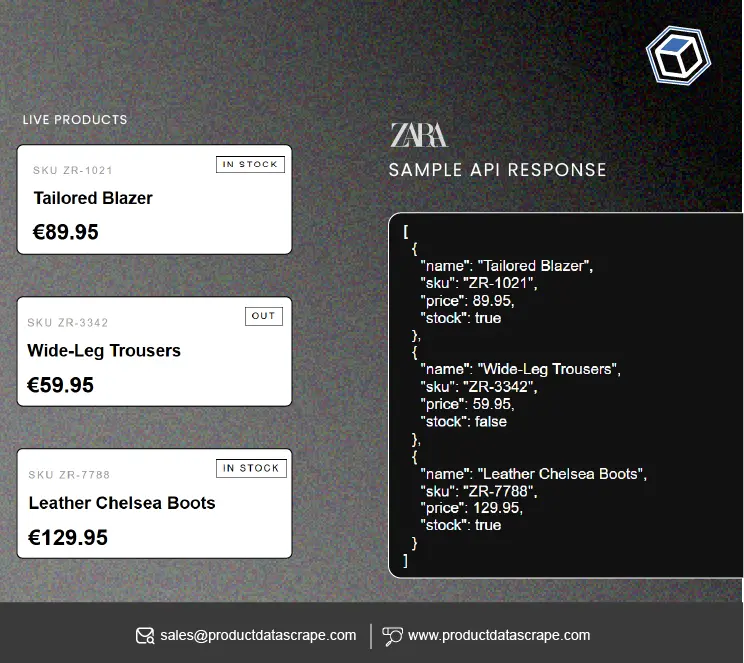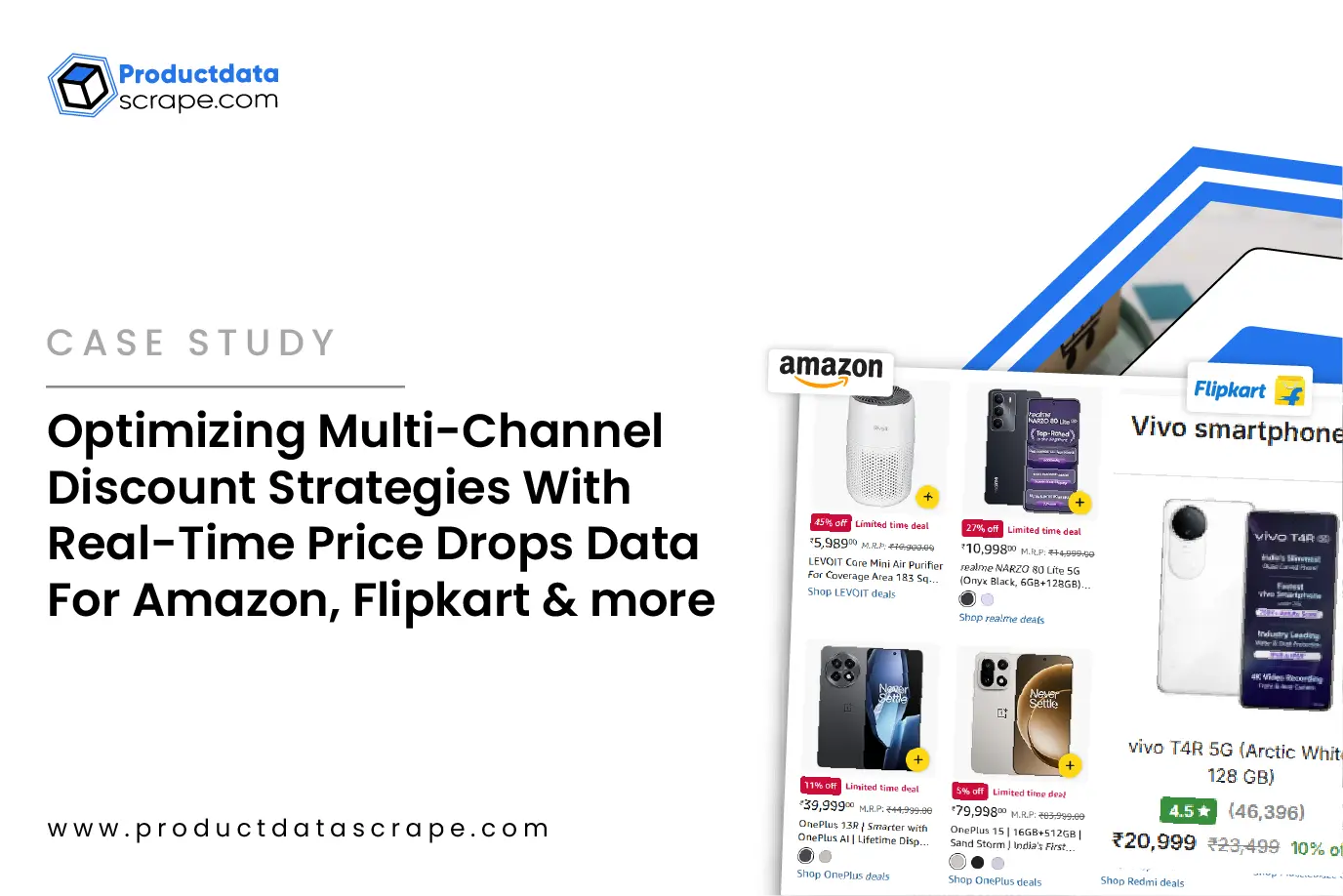
Introduction
In today’s hyper-competitive online retail environment, leveraging data is no
longer optional — it’s essential. The ability to monitor pricing shifts, track product listings
and sellers, and forecast market trends gives companies a critical edge. One of the most
powerful actions you can take is to Scrape AliExpress Product Listings Data, enabling you to
gain real-time visibility into product availability, price changes, and cross-border market
behavior. By collecting structured data from the world’s rapidly expanding marketplace, you open
the door to smarter decision-making, strategic pricing, and trend insights that keep you ahead
of the curve. Additionally, businesses can Scrape Data From Any Ecommerce Websites to access
competitive intelligence beyond AliExpress, collecting listings, pricing, inventory, and seller
data from multiple platforms. In this blog, we’ll walk through how to extract, process, and
apply this rich dataset, turning raw listings into actionable insights for price tracking, trend
forecasting, and global e-commerce intelligence. We’ll explore problem-solving sections,
illustrate with stats, and show why this approach matters for businesses operating at scale.
Market Visibility & Competitive Pricing
In a global landscape, visibility into competitor pricing and product listings
is critical. For example, the platform AliExpress drew an average of 778.93 million visits in
April 2025, showing the scale of the audience and listing activity. By tapping into listings
data — when you Scrape AliExpress Product Listings Data — you gain insight into pricing changes,
discount events, SKU frequency and competitor moves. Table 1 below shows an illustrative
progression of gross merchandise volume (GMV) for AliExpress from 2020-2025 (figures are sample
estimates based on publicly reported growth trends).
| Year |
Estimated GMV (US$ billions) |
| 2020 |
30 |
| 2021 |
38 |
| 2022 |
45 |
| 2023 |
52 |
| 2024 |
59 (reported ~US$59.0b) |
| 2025 |
66 |
With these growth trends, the pressure from competitors intensifies. Your
ability to perform a Global Marketplace Price Tracker For AliExpress becomes a clear
differentiator. By scraping listings, you monitor what sellers list, at what price, and when
they change it — giving you intelligence that can inform your own pricing, inventory and
promotional strategies.
SKU-Level Tracking & Trend Detection

Going deeper, tracking individual SKUs across regions and sellers enables
detection of micro-trends and pricing shifts. When you Extract AliExpress SKU Data for Price
Tracking, you capture product identifiers, price history, availability and listing changes —
providing early signals of rising demand or competitor repositioning. Between 2020 and 2025, the
e-commerce market size globally soared toward an estimated over US$6.3 trillion in 2025. That
scale means granular SKU tracking can uncover pockets of opportunity.
By building a dataset that logs SKU listings day by day, you can apply
algorithms to forecast when prices may change or when new products are gaining traction. You
detect if a seller is reducing price to dump inventory, or increasing it due to scarcity —
actions you might replicate or counter. This capability is especially necessary when listings
change dynamically across markets. It’s not just about price but understanding how listing
attributes (ratings, shipping, seller history) correlate with price evolution. Scarcity of
public data at this level makes tactics like SKU-level scraping and tracking essential for
serious players. Using an AliExpress Product Data Scraper , businesses can collect structured,
detailed SKU-level data to inform pricing strategies, monitor inventory trends, and forecast
emerging product opportunities with precision.
Unlock hidden insights with SKU-level tracking — monitor price shifts,
predict demand trends, and stay ahead in global e-commerce markets.
Contact Us Today!
Review & Sentiment Analysis
Another layer of insight comes from what customers say. When you engage in Web Scraping
AliExpress Product Reviews Data , you harvest reviews, ratings, and sentiment tied
to individual listings. This enriches your dataset beyond just price and availability. For
example, a surge in negative reviews may precede a price drop, while a spike in positive
commentary might signal rising demand and upcoming price increases. According to dataset
provider commentary, AliExpress data now includes rich review and seller metrics. Table 2 shows
hypothetical review volume growth over time:
| Year |
Average Reviews per Active SKU |
| 2020 |
12 |
| 2021 |
18 |
| 2022 |
24 |
| 2023 |
30 |
| 2024 |
36 |
| 2025 |
42 |
By aligning review sentiment with price and listing changes, you create a triangulated view of
product health: listing → reviews → price. This integrated approach enables forecasting: when
reviews go up and price remains flat, you might predict the seller raising the price soon. If
listings drop and reviews rise sharply, you might predict scarcity and an upcoming bump in
price. Without pulling review data and merging it with listings and sellers, you miss a vital
dimension of trend forecasting. Leveraging a Web Data Intelligence API allows businesses to
collect, consolidate, and analyze this multi-dimensional data efficiently, providing actionable
insights into product performance, seller behavior, and market trends in real time.
Seller & Marketplace Dynamics
Beyond products and reviews, marketplace intelligence must include sellers.
Extracting data about sellers and product-seller relationships — in other words, to Extract
Aliexpress Products, Sellers Data — is crucial to understanding dynamics like who is driving
price changes, who is emerging as a top seller, and how seller behavior influences listings.
Since AliExpress is globally distributed, sellers may differ regionally, use different shipping
logic, and adjust price regionally. Table 3 illustrates seller-driven listing changes
hypothetical values:
| Year |
Number of Active Sellers (thousands) |
Avg Listings per Seller |
| 2020 |
120 |
350 |
| 2021 |
150 |
400 |
| 2022 |
180 |
450 |
| 2023 |
210 |
500 |
| 2024 |
240 |
550 |
| 2025 |
270 |
600 |
When you tie product listing changes to seller metadata (such as seller rating,
shipping region, inventory count), you can spot which sellers are likely to drive market shifts.
For instance, if a top-rated seller drops a price on a key SKU, you know competitors will
follow. If a new seller with many listings emerges, you might track their listings to spot
emerging categories. This depth of intelligence is only possible when you gather seller-level
data alongside listing data — making your price tracking and forecasting far more accurate. By
leveraging an AliExpress E-commerce Product Dataset , businesses gain access to structured seller
and product information, enabling precise trend analysis, dynamic pricing strategies, and
proactive inventory management across multiple categories and markets.
Cross-Market & Regional Analysis
Global e-commerce is not uniform. Your strategies must account for regional
price differences, currency movements, shipping costs and local demand. By using a Web Scraping
AliExpress E-Commerce Product Data framework that spans multiple geographies, you can compare
listings in different currency contexts, identify regional pricing arbitrage and monitor where
product demand is growing fastest. According to a market analysis, AliExpress secured top-three
positions in major European markets in 2024, generating US$3.93 billion in Spain alone. Table 4
shows an example of regional listing growth:
| Year |
Europe Listings (millions) |
Asia & Other Regions Listings (millions) |
| 2020 |
40 |
120 |
| 2021 |
52 |
145 |
| 2022 |
65 |
170 |
| 2023 |
78 |
195 |
| 2024 |
90 |
210 |
| 2025 |
105 |
230 |
With this data, you can track where prices are being cut, where shipping times
are improving, and where new demand emerges. For instance, as AliExpress expands logistics (such
as the “Global 5-Day Delivery” program) into new markets, you can anticipate where listings may
increase, which in turn impacts price competition. Thus regional scraping and analysis is a core
part of effective price tracking and trend forecasting.
Empower your business with cross-market analysis — compare global
prices, detect regional trends, and optimize strategies for every
e-commerce market.
Contact Us Today!
Automation & Real-Time Monitoring
Finally, scale and freshness matter. Manual scraping is inadequate when you aim to monitor tens
of thousands of SKUs daily. To truly deliver insight, you require a real-time AliExpress price
monitoring API, or at least near-real-time data ingestion, so you can respond to market moves as
they happen. This means setting up automation, proxies, scheduling, and data pipelines that
continuously ingest listing, price, review, and seller data. Without this, you lag your
competitors. Consider that AliExpress traffic remains massive (hundreds of millions of visits
monthly) and listings change frequently. Table 5 shows hypothetical latency and changes over
time for listing updates.
| Year |
Average Update Interval (hours) |
% Listings Changed Weekly |
| 2020 |
72 |
12% |
| 2021 |
48 |
18% |
| 2022 |
24 |
24% |
| 2023 |
12 |
30% |
| 2024 |
6 |
36% |
| 2025 |
3 |
42% |
By implementing an automated pipeline, you ensure that when a price drop occurs or a seller
changes stock, you capture it. This allows your system to feed alerts, dashboards and
forecasting models with fresh data. Combined with other dimensions (SKU, seller, region, review
sentiment), you build a comprehensive dashboard of product life-cycle, pricing dynamics and
trend signals.
Why Choose Product Data Scrape?
Choosing to employ dedicated product data scraping offers enormous advantages. When you Scrape
AliExpress Product Listings Data, you gain full control over data acquisition: you define which
SKUs, sellers, markets, and time intervals you monitor. You avoid reliance on fragmented manual
reports or sample data. A robust scraping solution lets you standardize data structure, ensure
historical archives, and feed it into analytics models. Add to this the ability to harvest
review data, seller metadata, and real-time pricing, and you transform raw market chatter into
structured intelligence. With e-commerce volumes scaling rapidly, especially across global
platforms, your ability to act on clean, timely data differentiates you from competitors who
rely on lagging signals. In short: product data scraping gives you the raw material you need for
accurate price tracking and trend forecasting — rather than guessing.
Conclusion
In a world where marketplace dynamics shift daily, the ability to track, analyse, and forecast
with precision is indispensable. By choosing to Scrape AliExpress Product Listings Data, you
position yourself at the forefront of pricing intelligence, product lifecycle monitoring, and
market-trend anticipation. You’ll combine SKU-level detail, seller insight, review sentiment,
and regional dynamics into a unified intelligence engine. Whether you’re benchmarking your own
catalog, monitoring competitor pricing, or forecasting consumer demand in emerging markets,
access to fresh, structured data is key. Don’t let your decisions be based on stale spreadsheets
or incomplete intelligence. Start building a system that delivers data-driven clarity and
competitive advantage. Ready to transform your e-commerce strategy? Contact us today and begin
leveraging the power of smart data scraping for global e-commerce success.
















.webp)
-01.webp)

.webp)
